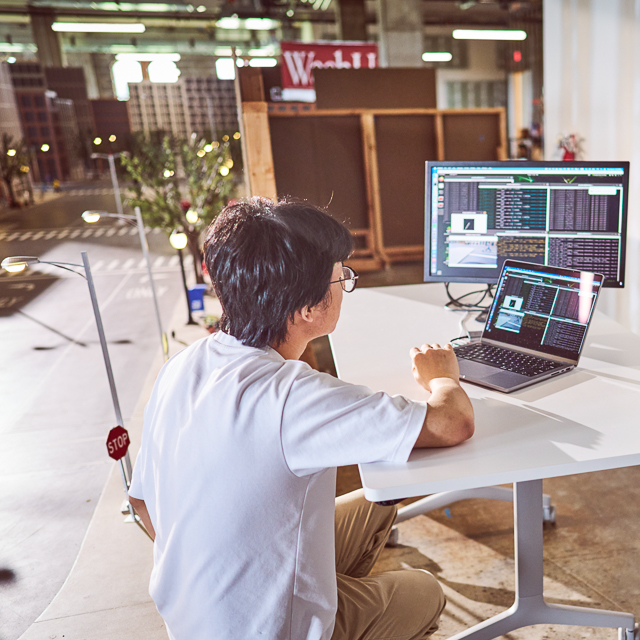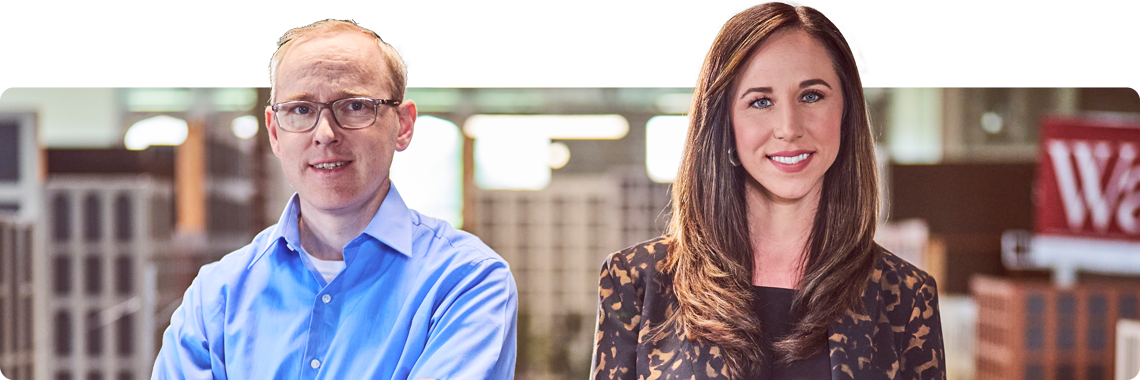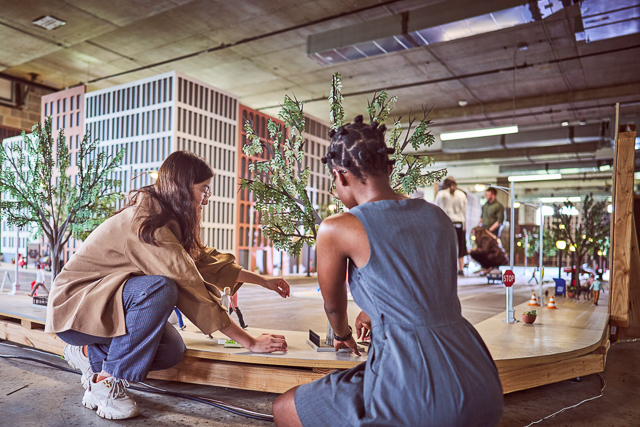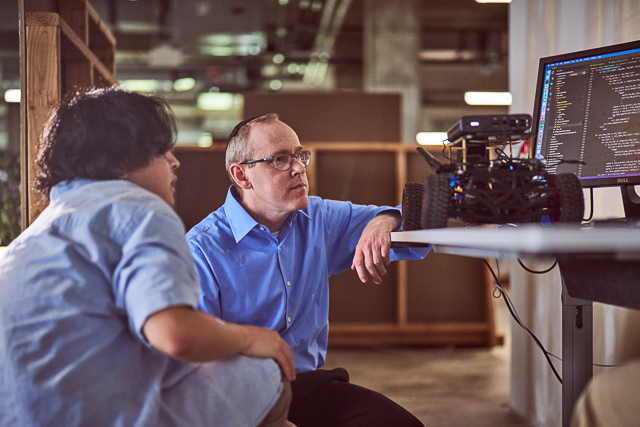Can we create a self-driving car you can trust?
WashU professors Constance Vale and Eugene Vorobeychik built a scale model of an urban neighborhood to test self-driving cars in a risk-free environment.
AI is changing a lot about the world, including how we drive. Record numbers of autonomous vehicles (AVs) are taking to the streets, but the new technology isn’t perfect yet. Though many expect AVs to be better drivers than humans, the cars have made headlines for accidents and fatalities. The AI algorithms struggle when faced with random or unusual occurrences on the road.
More testing and experimentation could make self-driving cars more reliable and safer, but full-scale experimentation with AVs is expensive, slow and dangerous to drivers and the public. That’s where the WashU Mini-City comes in.
Computer engineer Eugene Vorobeychik and architect Constance Vale have teamed up to build a life-like 1:8 scale model of an urban neighborhood to test self-driving cars. Besides being adorable, the display allows researchers to stress-test AVs in different lighting, weather and road conditions all without endangering real property, people or pets.
The Mini-City is the centerpiece of the newly established Center for Trustworthy AI in Cyber-physical Systems where Vale and Vorobeychik plan to expand their work with academic and industry partners. It’s not clear yet exactly how much self-driving cars will impact cities or commutes, but the WashU Mini-City will play out scenarios — at scale.

In WashU Mini-City, we are in this in-between space where we can run experiments quickly with fewer precautions, as the worst thing that can happen is not that horrible.
Eugene Vorobeychik, professor of computer science and engineering at the McKelvey School of Engineering
Design that makes a difference.



